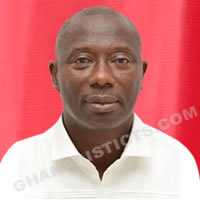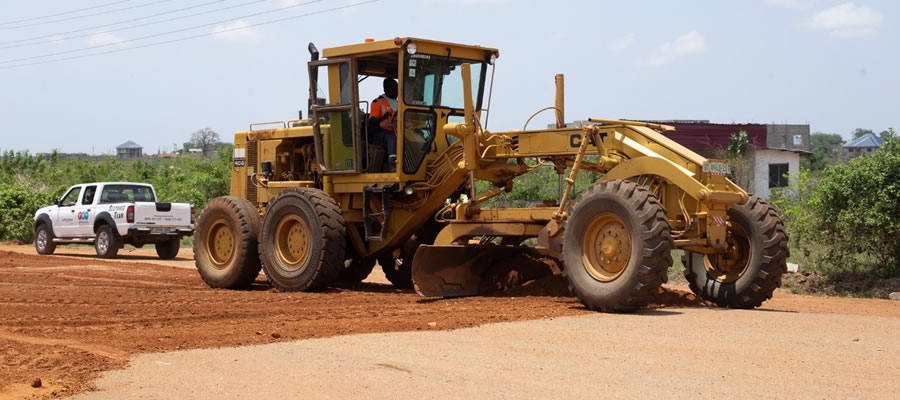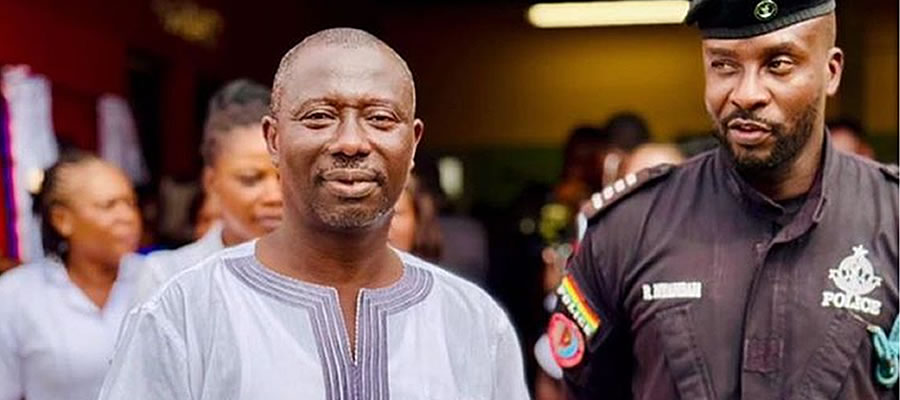

Education
Education in the Municipality has also experienced reforms driven by several objectives and policies designed at the National level. The Municipal Education Office handles all educational issues in the Municipality.
Table 1.27 indicates the type of educational institutions in the Municipality. It also indicates that there are 456 educational facilities in the Municipality, out of which 89 are public and 367 are private. It is however worth noting that, the Municipality has one Private University, (the Valley View University) at Oyibi. It can be mentioned that there are three (3) private SHS and one (1) public SHS in the Municipality.
The graph above indicates the number private and public educational facilities in the Municipality. It also indicates that there are more private schools in the Municipality than the public schools. From this, it can be said that, the private sector is complementing the effort of the Government to make education accessible to all in the Municipality.
The Municipality has six circuits with 88 public schools of which 24 are kindergarten, 35 are primary and 29 are Junior High Schools. The graph below shows the comparative distribution of schools within the various circuits in the Municipality. It also indicates that, Oyibi circuit has the highest number of Primary schools; Zenu circuit has the highest number of JHS and both Zenu and Michel Camp have the least number of KGs in the Municipality.
The Municipal Assembly needs to provide equitable educational infrastructure in all circuits in order for the Education Directorate to meet its vision.
The Municipality has a total of Four Hundred and Ninety Four (494) Private schools; which include: One Hundred and Eighty Two (182) kindergartens; One Hundred and Seventy Eight (178) Primary Schools One Hundred and Thirty One (131) JH Schools and Three (3) are SHS.
The table above displays the distribution of Private schools by levels in the Municipality for the academic year 2016/17. It also indicates clearly that Zenu Circuit has the highest number of Kindergarten, Primary and Junior High Schools. Michel Camp has the least number of schools by level amongst the schools.
The Municipal Assembly should partner the Education Directorate to create an enabling environment for the private sector to build more schools especially Senior High Schools. The Assembly should pursue the completion of the Senior High School at Katamansu by GETFund that has been abandoned.
Enrolment in Schools
The total enrolment in Public schools in the Municipality as at April, 2017 is 22,220 pupils. Table 1.29 below clearly shows that the gross enrolment of boys and girls over the years has seen increase and this can be attributed to government policies such as Free Compulsory Universal Basic Education (FCUBE), Ghana School Feeding, Free Uniforms etc. There are more girls in school than boys.
The current enrolment indicates a percentage of girls as 51% (36,142) whilst that of boys is 49% (35,167). This confirms that, parents in the Municipality have taken the girl-child education seriously. Also, the table shows that 38% of pupils representing 15,364 pupils do not continue their Junior High School education in the Municipality. This may be as a result of dropout (continuing their education in private JHSs in the Municipality, Ashaiman Municipal Assembly and Tema Metropolitan Assembly schools.
Table 1.31 indicates the total enrolment from 2014-2017 has always been high. The enrolment of girls which is 57,585 (51%), generally is higher than the enrolment of boys which is 56,218(49%) at all levels.
The table also shows that sixty five percent (65%) of pupils representing 43,728 pupils do not continue their Junior High School education in private schools in the Municipality. It is very instructive to know that the enrolment of pupils who move from the private schools primary level to JHS level is far less than the number of pupils who move from public schools primary level to JHS. This is as a result of:
(1) Most parents transferring their wards to public JHS in and out of the Municipality which is considered to be more economical.
(2) Most parents transferring their wards to other private JHSs in Ashaiman Municipal Assembly or Tema Metropolitan Assembly
Educational Programmes in the Municipality
Kpone Katamanso Municipality has received educational support from the central government in diverse ways. These include:
(1) Capitation Grant
(2) Ghana School Feeding Programme
(3) Free exercise books
(4) Free school uniforms
All these support from the government has increased enrollment in the public schools and had also helped to improve the quality of education in the Municipality. Currently Twenty-Seven (27) out of 34 primary schools in the Kpone Katamanso Municipal Assemblyare beneficiaries of the Ghana School Feeding Programme (GSFP). These are as follows:
(1) Kpone Methodist A Primary School
(2) Kpone Methodist B Primary School
(3) Kpone Presby A Primary School
(4) Kpone Presby B Primary School
(5) Kpoi-Ete Primary School
(6) Oyibi Presby Primary School
(7) Saduase Primary School
(8) Ebenezer Hill Primary School
(9) Sebrepor Presby Primary School
(10) Gbetsile 1 Primary School
(11) Gbetsile 2 Primary School
(12) Appolonia Methodist School
(13) Santeo KKMA Primary School
(14) Kpone Bawaleshi Presby Primary
(15) Zenu No. 1 KKMA Primary School
(16) Zenu No. 2 KKMA Primary School
(17) Zenu No. 3 KKMA Primary School
(18) Zenu No. 4 KKMA Primary School
(19) Garrison Primary School
(20) Michel Camp Pre-School
(21) Michel Camp Primary School
(22) Services Basic School
(23) Katamanso Presby Primary School
(24) Garrison Primary
(25) Kubekro KKMA Primary
(26) Haanaa KKMA Primary
(27) Michel Camp Army KKMA Primary
Plans are far advanced to enroll the remaining seven (7) on the Programme. Currently, the amount per child is Eighty pesewas (0.80ghp) and the total enrolment figures in the Municipality stands as 13,389 pupils for the 27 schools. The programme has some challenges which includes:
a) Delay in payment to caterers
b) Inadequate Amount allotted per child
c) Most of the schools do not have kitchens and poly tanks to help facilitate in the cooking
d) Some schools do not have water supply
Even though the Programme is faced with these challenges, the implementation of the programme has encouraged parents to send their wards to school and this had increased enrolment and attendance in the basic schools.
Staffing In Public and Private Schools
The table below indicates the staff strength of both Public and Private schools in the Municipality.
The table above indicates that the number of teachers in the Municipality is on the increase from 2014-2017. The percentage of professionally trained teachers in the Public Basic schools is 98% representing a total of 1831 teachers for both male and female.
The percentage of Non-Professionally trained teachers in the Municipality is 2% representing a figure of 71 teachers for both male and female teachers.
The data above also shows clearly that the Municipality has more female teachers (1152 teachers representing 63.8%) as compared to male teachers (652 teachers representing 36.2%).
Based on the increasing numbers of teachers, the Municipal Assembly should make resources available for the Directorate to help update teachers’ knowledge and skills in order to improve the quality of teaching and learning.
Table1.33 Trained and Untrained Teachers in Private School
From the table, the private basic schools in the Municipality have also seen an increase in the total number of teachers. The percentage of professionally trained teachers is 10.4% representing a total number of 724 teachers both male and female. The percentage of Non-Professionally trained teachers is 89.6% representing a total of 6205 teachers for both male and female. Notwithstanding, the percentage difference between professionally trained and non-professionally trained has no direct bearing on the performance of pupils our BECE results.
The total Pupil Teacher Ratio (PTR) of 39:1 in the Public Basic School is on the high side because general enrolment from Pre-school to JHS is higher as compared to the total number of teachers at each level. None of the levels met the standard of PTR, for example Pre-school is 25:1; Primary is 35:1 and JHS is 35:1.This had a direct effect on classroom management, effective teaching &learning and performance of pupils.
The Total Pupil Teacher Ratio (PTR) of 18:1 in Private Basic Schools is on the low side because there are more teachers as compared to total enrolment at all levels. The private basic schools did not also meet the standard of PTR.
School Performance
The table above indicates that percentage pass of boys and girls from 2014-2016 has increased in both public and private basic schools. The data also clearly shows that in public basic schools, the percentage failure of boys has decreased from 55.7 %( 2014) to 46 %( 2016) and the percentage of failure of girls has also decrease from 64.8 %( 2014) to 49 %( 2016).
In the private basic schools, the percentage failure of boys increased from 6.7 % (2014) to 9 % (2016) and the percentage of failure of girls increased from 8.4 % (2014) to 10 % (2016).
The Municipal Assembly and Education Directorate should put in place strategies to help raise the percentage pass of pupils in the public basic school.
Information and Communication Technology (ICT)
Information and Communication Technology (I.C.T.) is described as the technology that aids the creation and manipulation of Information and Communication hence it is concerned with the storage, retrieval, manipulation, transmission or receipt of data.
ICT plays a key role in the socio-economic development of the Municipality. The introduction of ICT as a subject in the basic schools shows the commitment of the government to develop human resource at an early age. It is worth mentioning that, the Municipal Assembly as part of its contribution towards the development of ICT at the basic level is in collaboration with some development partners to provide ICT centres for some schools within the Municipality. Some schools with ICT libraries have also been assisted by the Assembly. This is however not enough as the Assembly can partner the private sector in building infrastructure and providing ICT tools for the basic schools. This is expected to enhance their knowledge and skills in ICT.
The Assembly has also invested in ICT by purchasing computers and internet services for its staff to enable them discharge their duties effectively to develop the Municipality. Additionally, some staff has been trained to manage some applications that allow the Assembly to store and print data scientifically. To ensure the commitment of the Assembly, IT personnel have been engaged to see to tackle all issues related to ICT.
Moreover, the assembly has created the atmosphere for communication companies like MTN, Vodafone, Airtel and Glo to thrive in the Municipality. The contribution of these companies in improving upon ICT in the Municipality is also worth mentioning. Apart from the general services they provide in communication, they also provide internet services. This has helped make accessibility to ICT easier to the people in the Municipality.
In terms of development, it has helped in disseminating information to the public easier and faster. Also, collating and analyzing data for development have been made easier by ICT.
Also, schools that need new school blocks includes: Haanaa KKMA- (a JHS block and KG classrooms), Gbetsile KKMA Primary (3 - unit classroom block) and Ebenezer Hill ‘1’ (6-unit classroom block).
Challenges Faced By The Education Sector
a) No security in some schools leading to burglaries-e.g. Ebenezer Hills 1 & 2.
b) Serious cracks in some school walls and floors. E.g. Zenu cluster, Kpone Methodist Basic
c) High enrolment in some schools – e.g. Zenu Cluster of schools, Sebrepor primary and
JHS and Gbetsile cluster of schools.
d) Inadequate furniture in some schools
e) Shift system at Zenu Cluster of schools, Sebrepor Primary and JHS, Gbetsile Primary (1)
& (2) Schools and Oyibi Presby Primary Schools.
f) Encroachment on school Lands- e.g. Kpone Presby JHS, Zenu Cluster of Schools,
Ebenezer Hill JHS
g) Sinking school block –Zenu 2 & 4 Primary schools.
h) Lack of Ga Teachers in some schools.
i) A number of pupils/students with various disabilities identified in some schools.
j) Lack of washrooms for some schools- Santeo, Naanoman and Saasabi.
k) Inadequate funds for the running of the office.
l) Circuit Supervisors have no motor bikes for monitoring and supervision.
m) The negative attitude of some parents towards the provision of educational needs for their
wards is a worry. Eg. Provision of exercise books.
The Municipality has 22 public primary schools and 19 Junior High School. There is no public SHS in the
Municipality and therefore students who graduate from JHS have to move to other districts to access SHS. The Municipality can boast of one private tertiary institution.
The main challenge with education in the Municipality is inadequate infrastructure which has led to overcrowded classrooms. The average class size in the public schools in the Municipality is between 65 to 80 pupils per class. This situation puts a lot of stress on the teachers and this makes teaching and learning not conducive for pupils. To remedy the situation of overcrowding, there is the need to construct additional classroom blocks in areas where the situation prevails.
Date Created : 4/27/2023 12:00:00 AM












 facebook
facebook
 twitter
twitter
 Youtube
Youtube
 +233 593 831 280
+233 593 831 280 0800 430 430
0800 430 430 GPS: GE-231-4383
GPS: GE-231-4383 info@ghanadistricts.com
info@ghanadistricts.com Box GP1044, Accra, Ghana
Box GP1044, Accra, Ghana